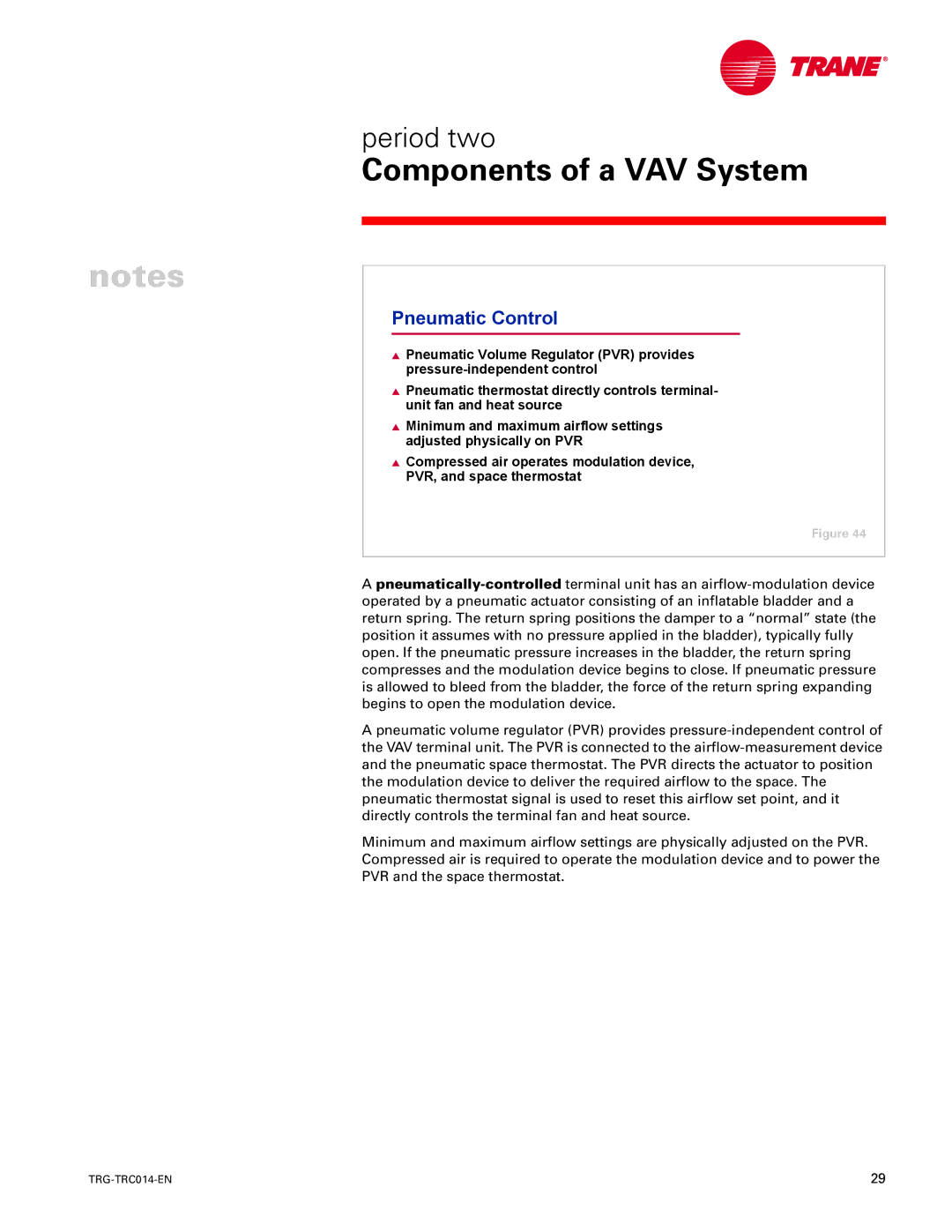TRG-TRC014-EN specifications
The Trane TRG-TRC014-EN is a comprehensive technical resource guide that serves as an essential tool for HVAC professionals and engineers looking to enhance their understanding of Trane's commercial HVAC systems. This guide provides an in-depth examination of Trane’s advanced technologies, key features, and design characteristics that position their products as industry leaders in heating, ventilation, and air conditioning.One of the standout features of the TRG-TRC014-EN is its focus on energy efficiency. Trane continuously works on incorporating cutting-edge technologies that minimize energy consumption while maximizing performance. This includes the use of variable speed compressors and advanced control systems that adapt the HVAC operation according to real-time demand, significantly reducing energy costs for end users.
The guide also highlights Trane’s commitment to sustainable practices. The incorporation of environmentally friendly refrigerants and compliance with regulatory standards ensures that Trane units not only deliver comfort but also contribute to lower environmental impact. The guide provides detailed specifications on these refrigerants, allowing engineers to make informed decisions in line with environmental policies.
Another important aspect of the TRG-TRC014-EN is its technical information regarding system design and application. With comprehensive data on airflow, capacity calculations, and installation techniques, the guide serves as a valuable resource in the design phase of HVAC projects. This ensures that systems are optimized for performance and meet the specific needs of any given commercial space.
Additionally, the TRG-TRC014-EN addresses integration with smart building technologies. Trane units are designed to easily integrate with building management systems (BMS), enabling better monitoring and control of HVAC operations. This compatibility enhances operational efficiency and supports predictive maintenance, reducing downtime and servicing costs.
Moreover, the guide emphasizes Trane’s extensive warranty and service support. Understanding that customer satisfaction extends beyond the sale, Trane provides comprehensive service options that assure users of reliable and prompt support throughout the lifecycle of their HVAC systems.
In conclusion, the Trane TRG-TRC014-EN stands as an essential guide for HVAC professionals seeking to leverage Trane’s innovative technologies and design features. With a strong emphasis on energy efficiency, sustainability, technical accuracy, smart integration, and robust support, this guide underscores Trane's position as a leader in the HVAC industry.

